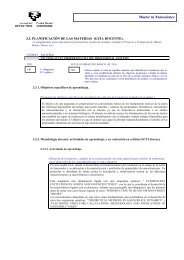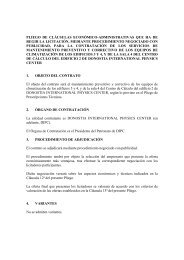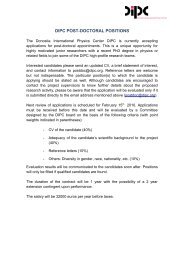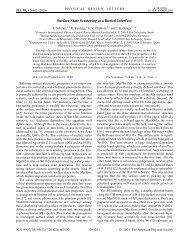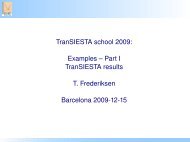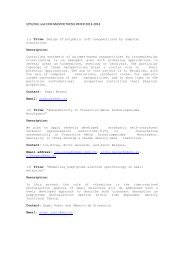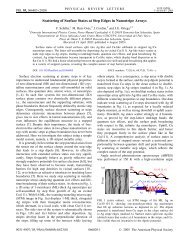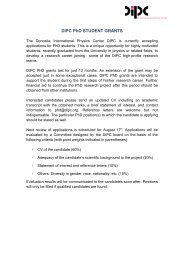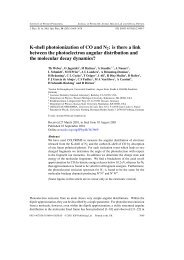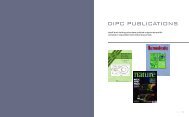Complete report - Donostia International Physics Center - Euskal ...
Complete report - Donostia International Physics Center - Euskal ...
Complete report - Donostia International Physics Center - Euskal ...
You also want an ePaper? Increase the reach of your titles
YUMPU automatically turns print PDFs into web optimized ePapers that Google loves.
2011 DIPC Highlight<br />
One dimensional bosons:<br />
from condensed matter systems<br />
to ultracold gases<br />
M.A. Cazalilla, R. Citro, T. Giamarchi, E. Orignac, and M. Rigol<br />
Reviews of Modern <strong>Physics</strong> 83, 1405-1466 (2011)<br />
We review a century of both experimental and theoretical results on interacting bosons systems<br />
in one dimensions. We also discuss current problems and future challenges.<br />
When matter is forced to move predominantly on a line, qualitatively new kinds of behavior emerge. At<br />
the individual level, we are all painfully familiar with this situation, as we experience it every time we are<br />
ourselves trapped in a traffic jam or we have to queue to buy movie tickets, for example. However, if we<br />
forget about the individual aspect of being forced to move on a line, we can easily grasp its collective<br />
side: in order to move (forward or backward), all individuals in the queue must agree to do so. This collectivizes<br />
any motion and turns it into a highly correlated phenomenon: if one individual moves, it is because<br />
all the others also do to some degree.<br />
Indeed, microscopic particles like atoms or electrons, which behave according to the laws of Quantum<br />
Mechanics, also experience this kind of collectivization when they are confined to move on a line. Although<br />
this was theoretically discovered very early in the history of Quantum <strong>Physics</strong>, but for a long time<br />
the study of models of systems of quantum particles interacting on the line was regarded as a theorists'<br />
playground; It was a field for the more or less mathematically inclined theoretical physicists to occupy<br />
themselves trying to solve toy models, which -it was hoped- could shed light into the complexities of real<br />
materials where particles move in all three familiar dimensions of space.<br />
Understanding the properties of matter confined in narrow channels is becoming more and more necessary<br />
as the size of elements of microchips is pushed towards the limits of miniaturization by the electronics<br />
industry. In the future, the properties of electronic devices, as well as the wires connecting them, will be<br />
strongly affected by quantum effects. This will lead to electronic “traffic jams”, which make it difficult the<br />
transmission of currents in such devices, and which will also require the development of new devices that<br />
exploit the properties of one dimensional systems. Moreover, new materials with strong direction-properties<br />
may be created: For example, heat conductors that conduct heat very efficiently in only one direction<br />
while remaining cool (due to a poor heat conductivity) in the other directions.<br />
Figure 1. Phase diagram of a coupled 1D Boson system. K is a dimensionless<br />
parameter that Measures the strength of the interactions<br />
amongst the bosons in 1D. J is the strength of the Josephson coupling<br />
(quantum tunneling) between the the 1D systems.<br />
70 DIPC 10/11<br />
DIPC 10/11 71



